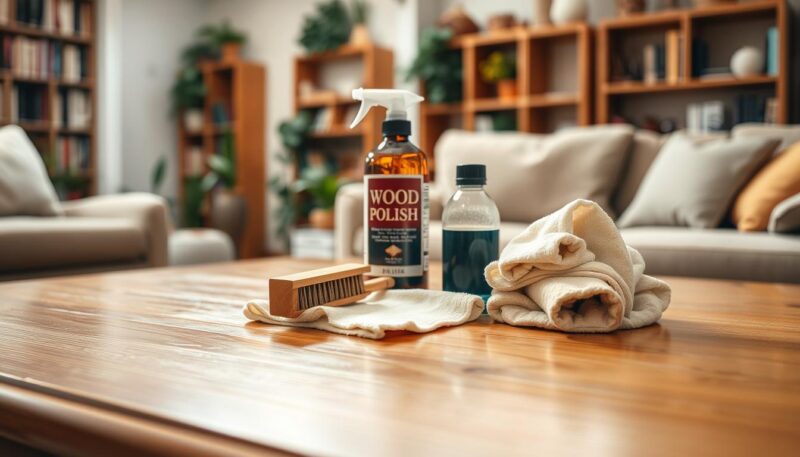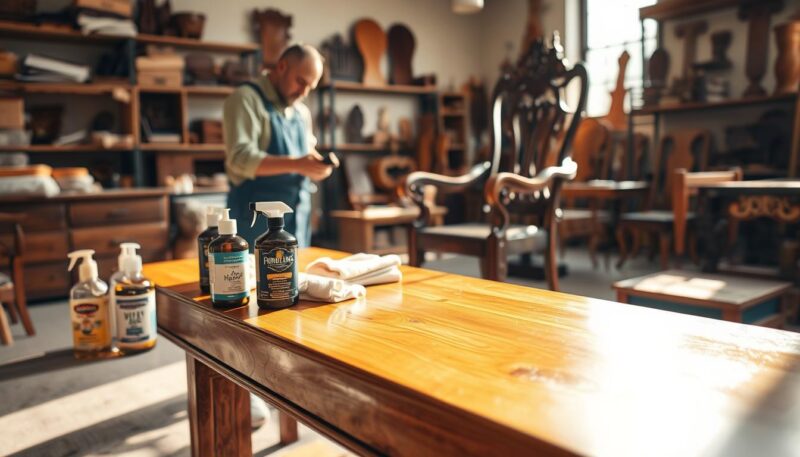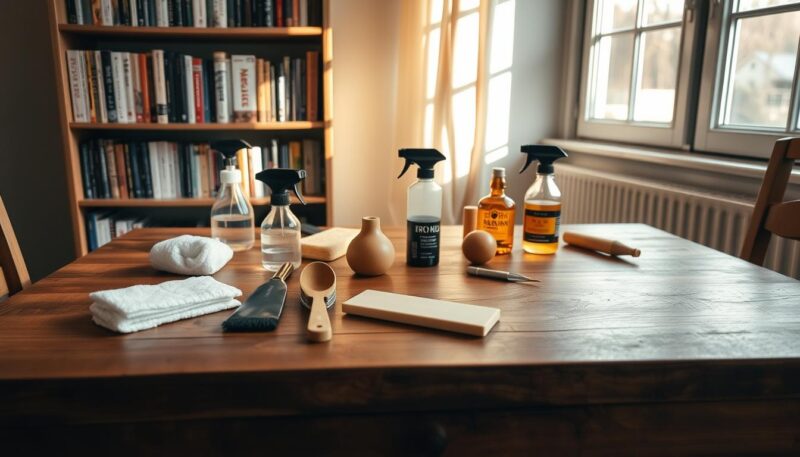Wooden furniture is not only a testament to craftsmanship but also a beautiful addition to any home. Its timeless charm and durability make it an investment worth protecting. However, many people are unaware of how to properly maintain their wooden pieces, leading to common pitfalls that can diminish their beauty and longevity. This guide on how to care for wooden furniture will illuminate essential practices, helping you grasp the dos and don’ts of wooden furniture maintenance. Caring for wood furniture might seem daunting, but with the right knowledge, you can ensure that your cherished items remain in pristine condition for years to come.
In the upcoming sections, we will take a closer look at the types of wood, various finishes, and why it’s crucial to know your furniture before embarking on the cleaning process. Along the way, we’ll debunk some misconceptions about wood cleaning and provide practical wood furniture care tips that anyone can follow. Whether you’re a seasoned homeowner or a newcomer to wooden furniture, this article will guide you through the best practices and highlight common mistakes to avoid. Discover the secrets that will keep your wooden furniture looking stunning and functional for generations.
Understanding Your Wooden Furniture
Exploring your wooden furniture through its components is essential for maintaining its beauty and longevity. Different types of wood and finishes embody specific characteristics, impacting cleaning and care techniques. A wooden furniture care guide can make all the difference in ensuring your cherished pieces remain stunning and functional.
Types of Wood
Wood furniture primarily consists of two categories: hardwoods and softwoods. Hardwoods like oak, maple, and cherry are prized for their durability and effectiveness in resisting everyday wear. These types of wood typically need less frequent but thorough cleaning. Softwoods such as pine and cedar, while more affordable, require gentler handling to avoid scratches due to their softer nature.
Different Finishes
Various finishes protect your wooden furniture, each requiring different care methods. Varnish provides a robust protective layer, while lacquer offers a thicker, glossy finish. Oil-based finishes, though beautiful, may need more regular application to prevent build-up that can attract dirt. Wax finishes can impart a rich sheen but may require more frequent upkeep than other types of finishes. Understanding these finishes helps you choose the best maintenance practices for your furniture.
Importance of Knowing Your Furniture
Knowledge of your furniture’s specific type and finish is vital for effective care. A thorough understanding of wooden furniture lays the groundwork for preserving its aesthetic appeal and durability. Employing the right cleaning products and techniques tailored to your furniture’s characteristics can prevent common issues such as scratching, discoloration, or dulling of the surface, ensuring your pieces stand the test of time.
How to Care for Wooden Furniture?
When it comes to caring for wood furniture, adhering to certain dos and don’ts is essential for maintaining its beauty and longevity. Understanding these guidelines can help you effectively protect your investment and ensure that your furniture remains a cherished part of your home for years to come.
Dos of Wooden Furniture Care
- Dust your wooden surfaces regularly with a soft cloth or a lambs-wool duster. This helps prevent dust accumulation and keeps your furniture looking pristine.
- Use gentle, pH-balanced cleaners specifically designed for wood. This will protect the finish and avoid any long-term damage.
- Dry any moisture immediately if spills occur. Prompt action helps prevent swelling, warping, or staining of the wood.
- Nourish your wooden surfaces once a year with suitable wood care products. This practice combats fading and keeps the wood looking vibrant.
- Monitor indoor humidity levels using inexpensive gauges. Keeping humidity between 30 to 45 percent protects against wood expansion and contraction.
- Always use coasters or trivets underneath hot or cold items. This prevents unsightly water rings and heat damage to your furniture.
Don’ts of Wooden Furniture Care
- Avoid using ammonia-based or silicone-containing products, as these can strip the wooden finish and cause irreversible damage.
- Do not expose your furniture to excessive water. Prolonged exposure can lead to warping, cracking, or discoloration that might be permanent.
- Steer clear of oil-based cleaners and polishes. These can build up over time, making your furniture prone to dirt accumulation.
- Never place hot items directly on wood. Heat can leave permanent marks, so always opt for protective measures.
- Don’t neglect regular maintenance. Cleaning your furniture weekly helps maintain its appearance and prolongs its lifespan.

Best Practices for Wooden Furniture Maintenance
Maintaining wooden furniture requires attention to detail and a commitment to preserving its beauty. Implementing best practices ensures your furniture remains in excellent condition. Regular care not only enhances the appearance but also extends the lifespan. Here are some essential tips to keep in mind.
Regular Dusting to Avoid Damage
Dust accumulation can scratch the surface and dull the finish of your wooden furniture. Regular dusting with a soft cloth or microfiber cloth can significantly reduce this risk. Aim to clean your furniture at least once a week to keep it in top condition. By doing so, you can reduce scratches by up to 80% and prevent longer-term damage.
Protecting from Environmental Factors
Environmental conditions can greatly impact the integrity of wooden furniture. Position your pieces away from direct sunlight to protect them from fading, which can affect the finish by around 40% over time. Additionally, avoid placing furniture in areas with excessive moisture or heat. Utilizing coasters for beverages and promptly cleaning up spills will help prevent staining and further damage.
Nourishing Your Wooden Surfaces
Nourishment is key to preserving wooden furniture. Using high-quality wood oil or conditioner every six to eight weeks replenishes moisture lost over time and enhances the natural beauty of the wood. Many experts recommend using Guardsman Revitalizing Lemon Oil for this purpose. Regular conditioning can help keep surfaces shiny and reduce the risk of cracking or warping, ensuring that your wooden furniture maintains its elegance for years to come.

Conclusion
Committing to a routine care regimen for your wooden furniture is essential for maintaining its beauty and functionality over the years. By applying the dos and don’ts shared throughout this wooden furniture care guide, you can honor the craftsmanship and natural beauty of wood in your home. Regular inspections and timely touch-ups can prevent minor issues from escalating, ensuring your furniture remains a centerpiece in your living space.
Moreover, implementing best practices like using coasters, maintaining ideal humidity levels, and performing regular cleaning can significantly extend the lifespan of your wood pieces. Remember, well-maintained wood furniture can last over 100 years, far exceeding the typical lifespan of poorly cared-for items. Treating your furniture with care not only enhances its appearance but also contributes to a harmonious and inviting home environment.
In the journey of maintaining wood furniture, every small effort counts. A commitment to cleanliness, protection, and restoration will transform the care of wooden furniture from a simple chore into a rewarding opportunity. Embrace these practices, and enjoy the lasting beauty and character that well-cared-for wood brings to your home.
